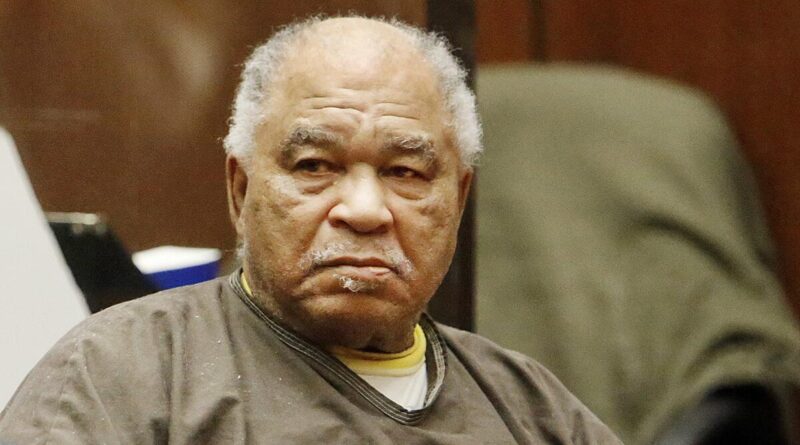Samuel Little The Diabolical Serial Killer From Reynolds Georgia Who Confessed to 93 Murders
Samuel Little is known as one of the most prolific serial killers in American history, with a shocking confession to 93 murders between 1970 and 2005. His victims were primarily vulnerable women, many of whom lived on the margins of society. The sheer scale of his crimes remained hidden for decades, with law enforcement unaware of his brutal spree until he revealed the details during his final years in prison. His life, crimes, and legacy continue to fascinate and terrify, offering chilling insights into the mind of a remorseless killer.
Early Life of Samuel Little
Samuel Little was born on June 7, 1940, in Reynolds, Georgia. Little’s early childhood was marked by instability and hardship. He claimed that his mother was a teenage prostitute who abandoned him at a young age. As a result, Little was raised by his grandmother in Lorain, Ohio. From a young age, he exhibited behavioral problems and struggled in school, eventually dropping out during his teenage years.
As he grew older, Little’s life became a series of petty crimes, arrests, and stints in jail. Throughout his youth, he committed a range of offenses including theft, assault, and fraud. This early criminal activity laid the foundation for the violent path he would follow in later years. While his upbringing was difficult, there were no immediate signs that Little would become a serial killer.
Criminal Career and Early Arrests
Little’s early adulthood was marked by a transient lifestyle, moving from place to place and often living out of his car. His criminal record spanned multiple states, with arrests for theft, assault, and driving under the influence. Despite numerous run-ins with the law, his violent tendencies went largely unnoticed by authorities. Little would spend years drifting through small towns across the United States, targeting women who he believed would not be missed.
In 1982, Little was arrested and tried for the murder of Patricia Mount in Florida. Mount, a 26-year-old woman, had been found strangled. Although Little was linked to the crime, a lack of conclusive evidence led to his acquittal. This case was a missed opportunity for law enforcement to stop his killing spree, and it exemplified his ability to escape justice.
The Murders of 93 Women
Between 1970 and 2005, Samuel Little confessed to murdering 93 women across 19 states. His victims were often women living on the margins of society—sex workers, drug addicts, or those who were homeless. Little specifically targeted women whom he believed no one would look for. Most of his victims were strangled, a method that left few forensic traces, making it difficult for authorities to connect the deaths to foul play.
Little’s killing method was chillingly consistent. He would approach women, often offering them a ride. Once they were alone, he would strangle them, taking advantage of his physical strength—honed during his days as a former boxer. After murdering his victims, he would dispose of their bodies in remote or isolated areas, ensuring that many of them were not discovered for weeks, months, or even years.
For decades, these crimes went unnoticed. In many cases, the victims’ deaths were either ruled accidental or were attributed to drug overdoses. Little preyed on the vulnerabilities of his victims and the often-overlooked nature of their lives. The fact that he could murder so many women over such a long period without being caught speaks to both his cunning and the failures of law enforcement to recognize the patterns in these deaths.
Escaping Justice for Decades
One of the most troubling aspects of Samuel Little’s reign of terror was his ability to evade detection for so long. Despite a string of arrests and encounters with law enforcement, he was never identified as a serial killer until much later in life. His transient lifestyle made it difficult for authorities to track his movements, and since many of his victims were from marginalized backgrounds, their disappearances or deaths didn’t attract much attention from the authorities.
Little would often strike in different states, far from his previous crimes, making it harder for investigators to link his murders. The victims’ identities were also a factor in how the cases were handled. Many of the women lived on the fringes of society, and as a result, their cases were not always prioritized by police departments. The lack of forensic evidence due to his preferred method of strangulation further complicated efforts to solve these cases.
In 2012, Little was arrested at a homeless shelter in Kentucky on a narcotics charge. His DNA was collected and entered into the FBI’s national database, where it was eventually matched to three unsolved murders in California from the 1980s. These murders involved women who had been strangled, and their bodies left in alleys or garbage dumps. With this breakthrough, law enforcement finally had a suspect, and Little was extradited to California to stand trial.
Samuel Little’s Confessions
Little’s capture in 2012 marked the beginning of a shocking series of confessions. After his DNA linked him to three cold cases in Los Angeles, detectives began interviewing him about other potential victims. At first, Little denied involvement, but as time went on, he began to open up, eventually confessing to a staggering 93 murders. His detailed recollections of each victim and crime were chilling.
What set Little apart from many other serial killers was his photographic memory for details. Even decades after the murders, he could vividly recall the faces of his victims, the clothes they wore, and the specific locations where he killed them. He even provided detectives with sketches of many of his victims, which proved invaluable in identifying some of the unknown women he had murdered. Little’s cooperation in this regard was a grim but crucial step in helping law enforcement solve dozens of cold cases.
Despite his willingness to confess, Little showed no remorse for his crimes. He seemed to take a perverse pride in the number of women he had killed and the fact that he had escaped justice for so long. His interviews with law enforcement painted a portrait of a man who saw his victims as disposable, deliberately targeting those he believed would not be missed by society.
Victim Identification and Cold Cases Solved
As Samuel Little’s confessions continued, law enforcement agencies across the United States began working to match his descriptions with unsolved cases. In many instances, his memories of the murders led to the identification of previously unidentified victims. This was particularly important for the families of the victims, some of whom had spent decades wondering what had happened to their loved ones.
According to the FBI, Samuel Little’s confessions have helped solve at least 60 cold cases so far, making him one of the most deadly serial killers in U.S. history. His ability to recall specific details about the murders, despite their occurring years or even decades earlier, has provided a grim but necessary sense of closure for some families.
However, not all of Little’s victims have been identified. Despite his detailed confessions, some of the women he killed remain unknown. Their bodies were never found, or they were so far off the grid that no missing persons report was ever filed. As a result, it is likely that some of his victims will remain unidentified indefinitely.
The Psychology Behind Samuel Little’s Crimes
Understanding why Samuel Little committed such an extensive string of murders has puzzled criminologists and psychologists. Unlike some serial killers who have a clear motive, such as sexual gratification or power, Little’s motivations seem to stem from a deep-seated disregard for human life. He viewed his victims as disposable, preying on their vulnerabilities and targeting those least likely to be noticed by society.
Little’s ability to evade law enforcement for so long also suggests a level of cunning and manipulation that is common among serial killers. He carefully selected his victims and often relocated after committing his murders, making it difficult for law enforcement to track him. His violent tendencies, combined with a life of drifting and petty crime, created the perfect storm for a decades-long killing spree.
Death in Prison
On December 30, 2020, Samuel Little died in Los Angeles County, California, at the age of 80. At the time of his death, he was serving multiple life sentences for the murders of three women in Los Angeles. While he had been convicted for these murders, Little’s legacy is defined by the dozens of unsolved cases that his confessions helped close in the final years of his life.
Even in death, the full extent of Little’s crimes may never be known. While he confessed to 93 murders, it is possible that he killed even more women. His death brought an end to one of the most disturbing criminal careers in American history, but the pain and suffering he caused will continue to haunt the families of his victims.
Legacy of a Serial Killer
Samuel Little’s confessions shocked the world and changed the way investigators approach cold cases, particularly those involving marginalized victims. His case highlights the challenges law enforcement faces when dealing with transient killers who operate across multiple jurisdictions. It also underscores the importance of re-examining unsolved cases, particularly those involving vulnerable women.
Though Little is gone, the families of his victims are left with the tragic legacy of his crimes. His life serves as a reminder of the horrors that serial killers can inflict, and the ways in which justice can sometimes fail those who are most in need of protection.
Discover more from City Towner
Subscribe to get the latest posts sent to your email.




